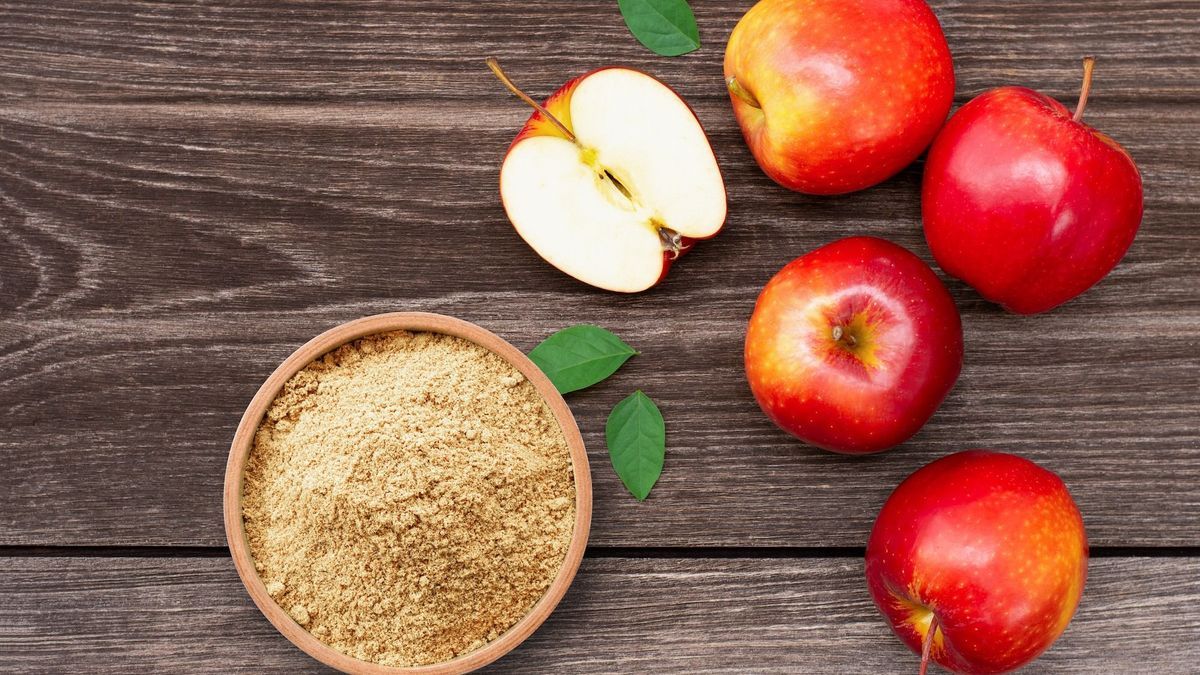
This substance, with its strong gelling power so useful for the preparation of homemade jams and toppings, is naturally present in many plants. But it is also used in food industry recipes. What are the nutritional benefits of pectin? Is its consumption dangerous for our health? How to use it best? We take stock with Raphaël Gruman, dietician-nutritionist.
Pectin is a soluble dietary fiber of plant origin. It is present in quantity in the skin and seeds of certain fruits and vegetables such as apple, lemon, orange, apricot, plum, guava, pear, onion… “Its role is to help maintain the structure of the cell walls of these plants, providing resistance comparable to cement. This is the reason why the more pectin the fruit contains, the more resistant it is: thus, an orange peel contains 30% pectin, while that of an apple contains 15% and that of an onion 12%. “explains Raphaël Gruman.
In cooking, it acts as a texturizer thanks to its strong gelling power. If it is also well known to those who cook “homemade” jams, jellies and cake toppings, it is also used in the composition of industrial dish recipes.
What is pectin used for?
Discover the different uses of this product and its benefits on our health.
Pectin helps in making culinary preparations
Thanks to its texturizing power, pectin plays a gelling role in many homemade and industrial culinary preparations. It is therefore essential in the preparation of recipes for jams, jellies, toppings on cakes and fruit jelly inserts in pastries.
Pectin traps cholesterol
Pectin has the ability to trap fats contained in our food before digestion and promote their elimination through the stools. This virtue, which was validated by a detailed analysis of 67 studies on 2,990 adults, showed that the consumption of 5 g of apple pectin per day made it possible to reduce the level of LDL cholesterol (“the bad”) without affecting HDL cholesterol (“the good one”), and reduce total cholesterol levels by 5 to 16%1. Pectin thus helps to preserve good cardiovascular health, helping to keep the development of heart problems such as heart attacks at bay.
Pectin helps you lose weight
Although pectin will not directly make us lose weight, it does have the advantage of having appetite suppressant properties. It owes this action to its gelling power. “When pectin arrives in our stomach, it becomes engorged with water and forms a gel which fills a large part of the pouch, which causes a rapid feeling of satiety., specifies Raphaël Gruman. And long-lasting, because this fiber delays the emptying process of the stomach, prolonging this feeling of satiety for several hours. Ultimately, it cuts down on cravings between meals. An asset to avoid snacking at 11 a.m. and 5 p.m., and thus reduce the day’s calorie intake.
To benefit from these benefits, pectin-based products can help you… just like biting into an apple at the end of a meal or as a snack. In addition, chewing increases this appetite suppressant effect.
Pectin helps regulate blood sugar
By delaying gastric emptying, pectin slows down the absorption of carbohydrates by the body, thus reducing the total Glycemic Index of the meal. “An asset for people with diabetes because little by little, it helps reduce fasting blood sugar levels as well as the level of glycated hemoglobin.specifies the dietitian.
Pectin improves our intestinal microbiota
Another advantage of this food product: pectin is part of the prebiotic family. “These are fermentable fibers which have, in particular, the role of nourishing and ensuring the growth of probiotics, these good bacteria present in our intestines, and which have the function of strengthening our immune defenses, of promoting the absorption of nutrients by our body, to treat a digestive disorder such as diarrhea or to improve our digestion“, explains Raphaël Gruman. Pectin thus acts indirectly to take care of our overall health.
In which food products can we find pectin?
The food industry uses pectin from dried apple marc reduced to powder. Thanks to its gelling properties, this product is used as a texturing agent. This is how we find it in recipes for jams, pastries based on jam or jelly, in toppings on cakes, but also in certain fruit yogurts, margarines and vegetable or low-fat fresh creams, ice creams and fruit drinks, sauces, as well as confectionery such as fruit jellies and marshmallows.
Manufacturers use two kinds of pectins: highly methylated pectins capable of gelling in an acidic environment and containing little water, and weakly methylated pectins, such as amidated pectin, which gel in the presence of calcium. In the list of ingredients, these products appear under the name E440.
How to use pectin?
This gelling substance also has its way into our kitchens. Its first use is to make homemade fruit (apple, strawberry, cherry, apricot, etc.) or vegetable (carrot, zucchini, cucumber, etc.) jams and jellies. But not only that: it can also be used to make milk jams, sauces, fruit purees, diet desserts and gelled milk desserts.
Pectin offers many advantages: not only does this substance provide strength and consistency to the preparation, but it also reduces cooking time and prolongs shelf life. Commercially, you will find NH pectin in powder form. The dosage is as follows: 5 to 15 g of pectin per kg of finished product.
Is pectin dangerous for your health?
Pectin is not harmful to health. However, at high doses, consumption of its industrial version E440 can lead to gastric disorders such as flatulence or diarrhea. “In addition, additives, once ingested, transform into methanol (methyl alcohol) in the body. Pectin being present in many industrialized products, exposure to too high a level could present a risk to the health of the most vulnerable (young children, immunocompromised people, seniors, etc.)”, recommends our expert. Monitor your consumption and prefer home recipes whenever possible.
